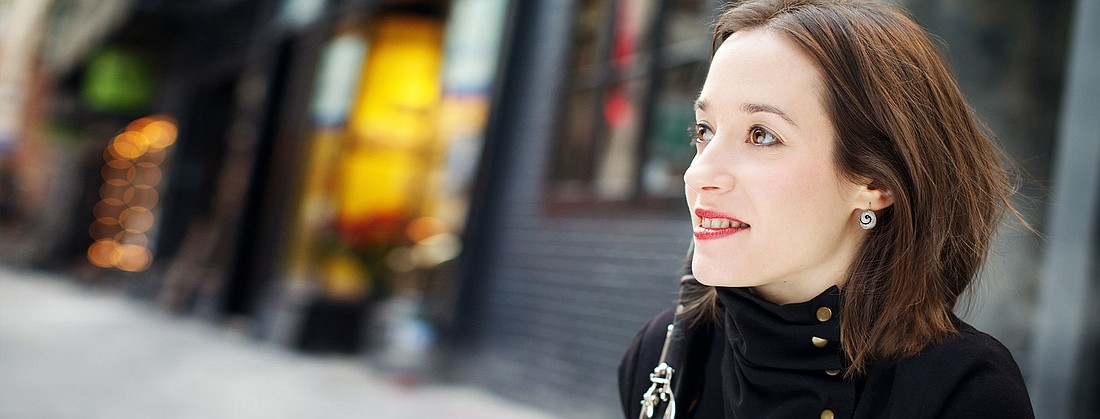- December 26, 2024
-
-
Loading

Loading

This year, the Sarasota Music Festival invited two established professional chamber music groups to perform as well as serve as coaches for the festival fellows. The first week spotlighted the Montrose Trio, and this past week, the Pacifica Quartet was in residence. What a difference these groups have made, not only for the fellows to benefit from the musicians’ expert coaching but also for the audience to bask in the sunlight of their outstanding performances.
“Windfall,” Thursday’s faculty concert, opened with oboist Nancy Ambrose King and pianist Joy Cline Phinney in a performance of Poulenc’s Sonata for Oboe and Piano, which was dedicated to the memory of Sergei Prokofiev and one of the composer’s final works. The sonata takes both the oboe and the oboist to the extremes of the instrument and is grindingly difficult, even in its melancholy mood. Both artists were certainly up to the challenge, and it was beautifully played.
Brahms’ Clarinet Trio in A Minor featured Romie de Guise-Langlois, clarinet; Desmond Hoebig, cello; and Jeffrey Kahane, piano. The ensemble blend was excellent, especially between cello and clarinet, with subtleties of phrasing that explored all the facets of this great work.
Full disclosure: Each of these concerts featured a must-have piece I’d want if stranded on a desert island — starting with the Beethoven String Quartet No. 9 in C Major (Razumovsky), which was given an absolutely bravura performance by the Pacifica Quartet (Simin Ganatra and Austin Hartman, violins; Mark Holloway, viola; and Brandon Vamos, cello.) What an absolute delight it is to hear such seasoned players who have been performing together for some time just dive into the music and give an exciting performance. Holley Hall shook with bravos, applause and cheers afterward.
Friday’s concert at the Sarasota Opera House, “Larger Forces,” opened with “Dixtuor” by Jean Françaix with a woodwind quintet of fellows anchored by faculty flutist Carol Wincenc that was paired with a string quintet including faculty cellist Desmond Hoebig.
This is not a major work by any means, but it is interesting because the first movement features melody in the strings with essentially a wind obligato, reversing in the scherzo-like second movement and then musically chasing each other through the last movement with alternating motives and phrases. It was well-played by the group.
Next was my second “desert island” piece, the totally effervescent Octet in E-Flat Major by Mendelssohn, with the Pacifica Quartet joined by fellows Ann Sangeun Cho and Diana Do Hyung Kim, violins; Devin Moore, viola; and Krystian Chiu, cello. Written when Mendelssohn was only 16, the octet is much more than just a double-string quartet, for each instrument has its own identity and task in completing the entirety that is this great piece of music. The entire ensemble was both rapt and wrapped up in this performance, from the long swooping lines of melody of the first two movements, through the fleeting firefly passages of the Scherzo, ending with that vast roller-coaster ride of the finale. It was a performance worth bringing along to that island.
Yet it was only to be topped by an absolutely flawless performance of Brahms’ massive Piano Quintet in F Minor, with Kahane’s piano joining Pacifica Quartet to end the evening in a most thrilling manner.
In Saturday’s “Three Titans” concert, as a first course we were treated to a performance of Beethoven’s Octet in E Flat Major for winds, with festival fellows joined by faculty members King, oboe; William Winstead, bassoon; and William VerMeulen, horn.
Beethoven’s octet is an early work and went through several versions, but it wasn’t published until after his death. It shows the influence and humor of Haydn, with whom Beethoven studied briefly, and although the third movement is in minuet form, it is certainly a scherzo in feeling.
The performance provided a challenge for all — in range and dexterity — and was given a first-rate showing by these excellent players.
In performances during the classical era, most orchestral performers stood while playing and had no conductor, with the first violinist serving as the leader of the group. Such was the case in the Haydn Symphony No. 80 in D Minor for full orchestra, with faculty violinist Alexander Kerr as the leader. Playing without a conductor is no small feat; the musicians must listen carefully, to one another and to the entire group, and fit their lines into the whole in tempo and dynamics. The orchestra did this admirably, with unanimity of sound and balance.
Romie de Guise-Langlois returned as soloist in Mozart’s Clarinet Concerto and gave the audience a stellar example of tone, breath control and musicianship. Originally written for a Bassett clarinet, which is a bit larger than the regular clarinet, with a deeper sound and lower register, it is most often played on an A clarinet. Guise-Langlois used an A clarinet and played with a lovely sound, consistent throughout all registers and dynamic levels. She had technique to spare as she spun Mozart’s web of melody with an enchanting sense of music and control and was sensitively accompanied by the orchestra, again helmed by Kerr as leader. Yes, this one stays in my desert island list.
This indeed was “The Week That Was Outstanding” in so many musical ways. Former festival director Robert Levin returns for the final week of the event and brings even more musical treats to this wonderful Sarasota tradition.